Sinner vs Zverev: AO Men’s Final Analysis
Baseline exchanges, net approaches, return positioning, clutch serving
Jannik Sinner produced one of his most stifling, suffocating performances on Sunday night to defend his Australian Open title against Alexander Zverev. Sinner continued his hard-court rampage, becoming only the fifth man to claim three consecutive Grand Slam hard-court titles (AO 2024, USO 2024, AO 2025).
Outside of a burst in the second set, Zverev struggled to gain a foothold in the match. How did Sinner do it? Let’s get into the analysis.
Baseline exchanges
One of the key factors in Sinner’s win was his dominance in extended rallies. Sinner won two-thirds (67%) of all rallies that were nine shots or longer. It was a trend that was set very early on in the match – in the first set, Sinner won 10 of 13 points that were 9+ shots in length.
While Sinner was as resolute and damaging as ever from the baseline, Zverev was a big contributor to his own demise. His shot-making was passive, preferring to hit back cross-court or through the middle of the court. Particularly in the early stages, Zverev showed little intent, opting simply to get balls back into play.
Put plainly, this is a sub-optimal strategy against Sinner. The percentages will eventually win out – Sinner has a more reliable forehand and backhand than Zverev, so as the rally gets dragged out longer and longer, Sinner becomes more likely to win the point. You can’t wait for the best players to make mistakes – they won’t.
Before getting into some examples of this, here’s a look at Zverev’s percentage of 9+ shot rallies won across the AO. Prior to the Sinner match, he had won 53% of such rallies:
A perfect example of Zverev’s unwillingness to be aggressive comes from early in the first set at 2-2 40-40 on Sinner’s serve, during an extended rally. Zverev is intent on playing the percentages, looking to go cross-court at every opportunity – even when it actually becomes the harder shot:
As shown in the GIF above, Zverev is pushed on to his forehand wing following a short angled cross-court FH from Sinner. Sinner is still closer to the deuce side of the baseline, his body weight neutral. The ball sits up perfectly for Zverev to hit down the line – he can either play with a little margin or go for an outright winner. Instead, he does neither:
An example of an extended baseline exchange between Sinner and Zverev from the same game helps to illustrate this passivity further. Zverev is intent on hitting back cross-court, avoiding the down-the-line shot. This pattern continues until Sinner opts to take the down-the-line option, and Zverev immediately coughs up the FH error:
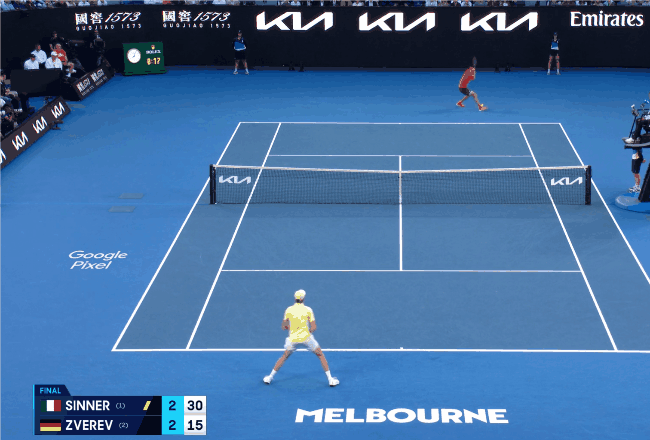
Net approaches
Another aspect of the game that Zverev struggled with on Sunday was his net play and net approaches. Zverev won only 52% (14/27) of his net points against Sinner, the lowest he tallied across the whole tournament. Across all of his other matches, he won 69% of his net points:
This was due to a combination of factors, including Zverev’s poor approach shots and Sinner’s sensational court movement and anticipation. The below example from the first set demonstrates this well. Zverev just doesn’t get the forehand approach deep enough and Sinner comes from nowhere, picking him off down the line:
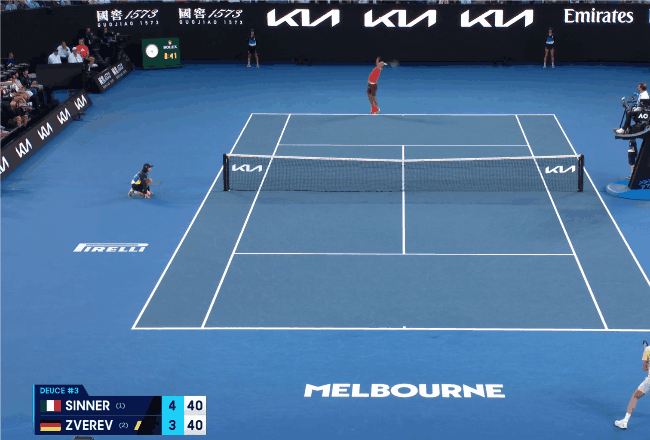
Another example from the same game. Zverev has once again pushed Sinner very wide, but Sinner draws Zverev forward with a short sliced forehand. Once again, with the whole court at his disposal, Zverev can only hit a meek backhand approach right at Sinner – who accepts the invitation to pass with glee:
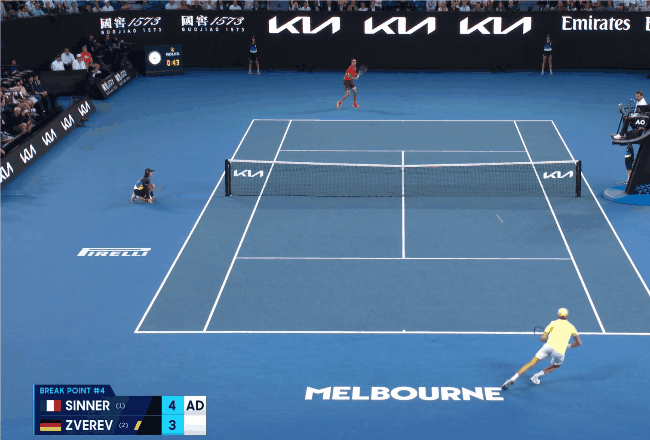
Serving
One of Sinner’s biggest strengths in recent times has been his serving. On Sunday night, Sinner faced zero break points. It’s not the first time either – the main example that comes to mind is that Djokovic hasn’t been able to generate one in the last 6 sets they’ve played.
A big reason for this is that Sinner got significantly more value for his first serves compared to Zverev, although Zverev (68%) made a greater percentage of first serves than Sinner (60%). He won nearly 5 of every 6 points when he got a first serve in:
Sinner had an excellent amount of success on deuce court first serves – he only lost three points all match from there. In fact, Sinner was able to win first serve points from any location, maybe excepting AD court serves down the T.
It’s not just Sinner’s placement that’s given him so much success – it’s also his ability to find big serves in clutch moments.
One of these clutch serving sequences came at 5-4, 0-30 in the second set. Sinner’s level had fallen away slightly in the second set, and he found himself just two points away from dropping the set. What came next was three consecutive first serves made, getting him to 40-30 and relieving the pressure. He held for 5-5 and would go on to win the set in a tight tiebreaker.
Here's a couple of examples from that game below:
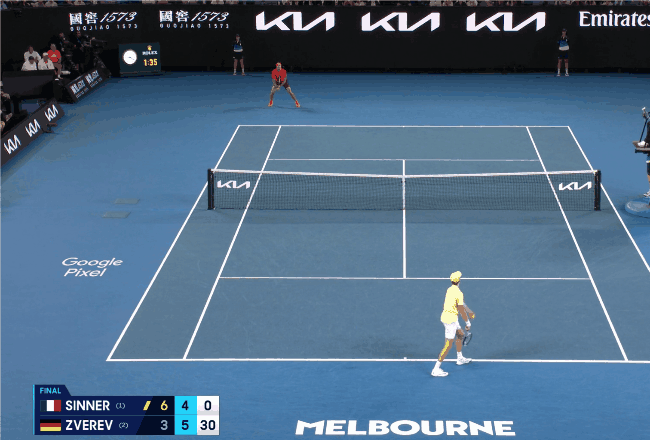
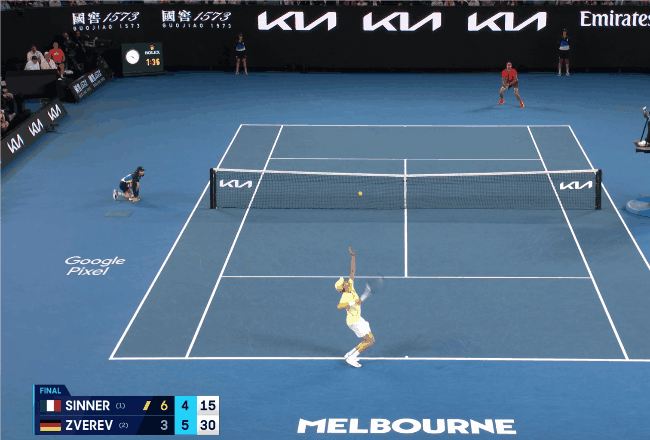
Jeff Sackmann, for his blog Heavy Topspin, recently highlighted in a recent article that while other players are normally already maximising their serve during regular points, Sinner keeps something extra in the locker for when he needs it. It’s a fantastic weapon to have.

Returns & return positioning
Early in the first set, Sinner made an interesting adjustment to his return position on Zverev’s second serves.
Very early in the first set, Sinner opted to stand close to the baseline on Zverev’s second serves. Take a look at the return position below at 1-2:
However, just a few games later at 3-4, Sinner was standing much further back for the Zverev second serve – aiming to give himself more time. For some players, this might be a less-than-ideal strategy, but Sinner is a quality returner, and so he can still cause damage standing further behind the baseline:
It was an adjustment that worked well for Sinner over the match – winning 50% of points on Zverev’s second serve. A good example here at break point in the middle of the third set:
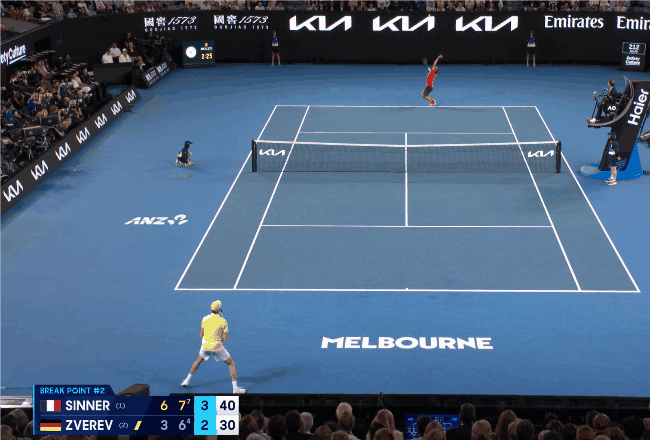
Overall thoughts
It felt as if the pressure that comes with a Grand Slam final swallowed up Zverev once again on Sunday night. It manifested itself in his passive play, something that I saw flashes of in his first set against Djokovic in the semi-final.
Sinner has been underdone all tournament, hasn’t played at his best for large parts, and yet still found a way. It’s a trait shared among the very best in tennis. And in contrast to Zverev, Sinner embraces pressure; he owns it. There’s a quote from Sinner that I’m reminded of from last year’s AO that’s stuck with me:
“There is always pressure, but the pressure is something good… I like it, because that’s where most of the time I bring out my best tennis.”
It’s a formidable mindset to have. And it’s a warning sign for all.
Thanks as always for reading! AP.

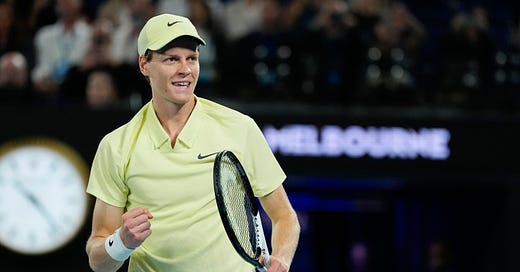




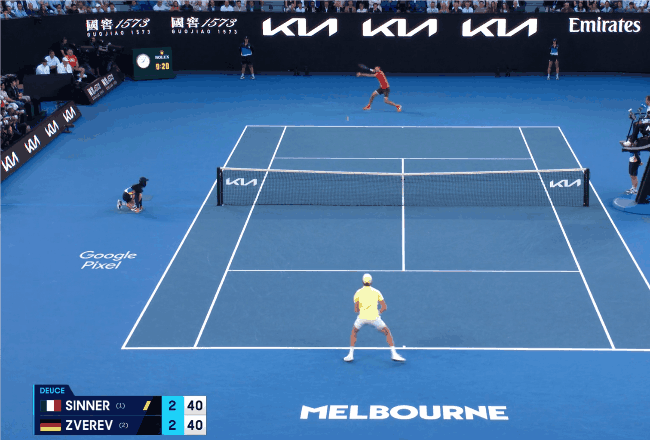



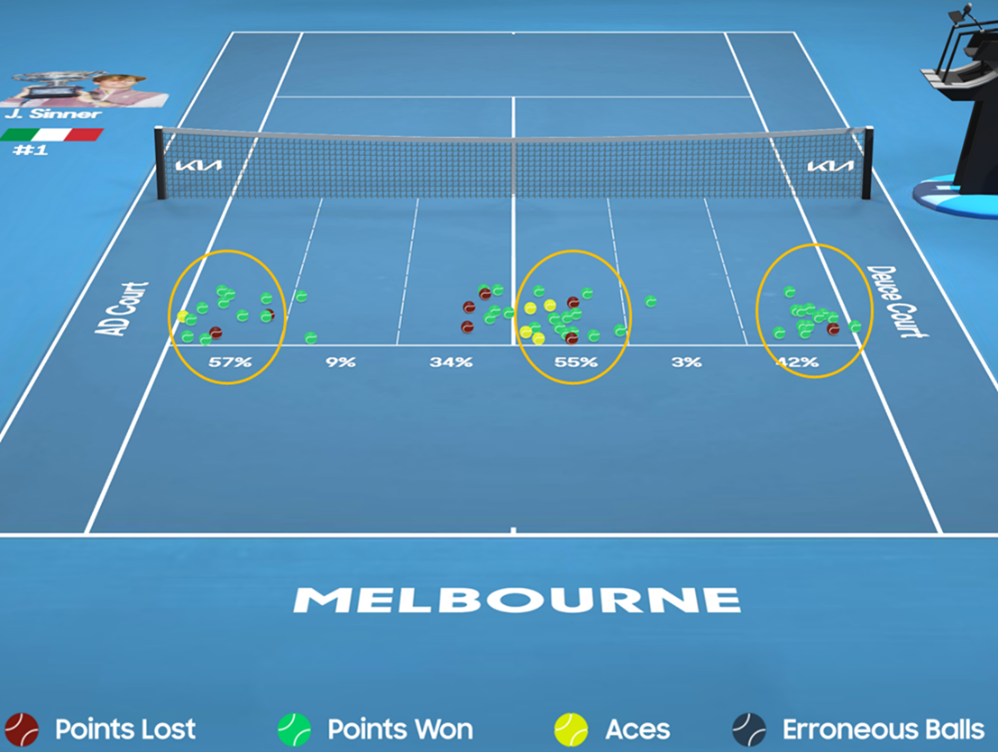
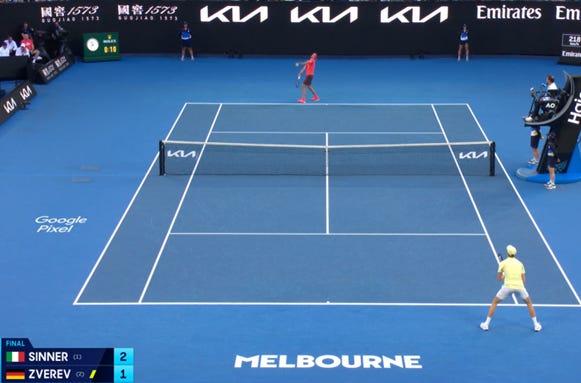
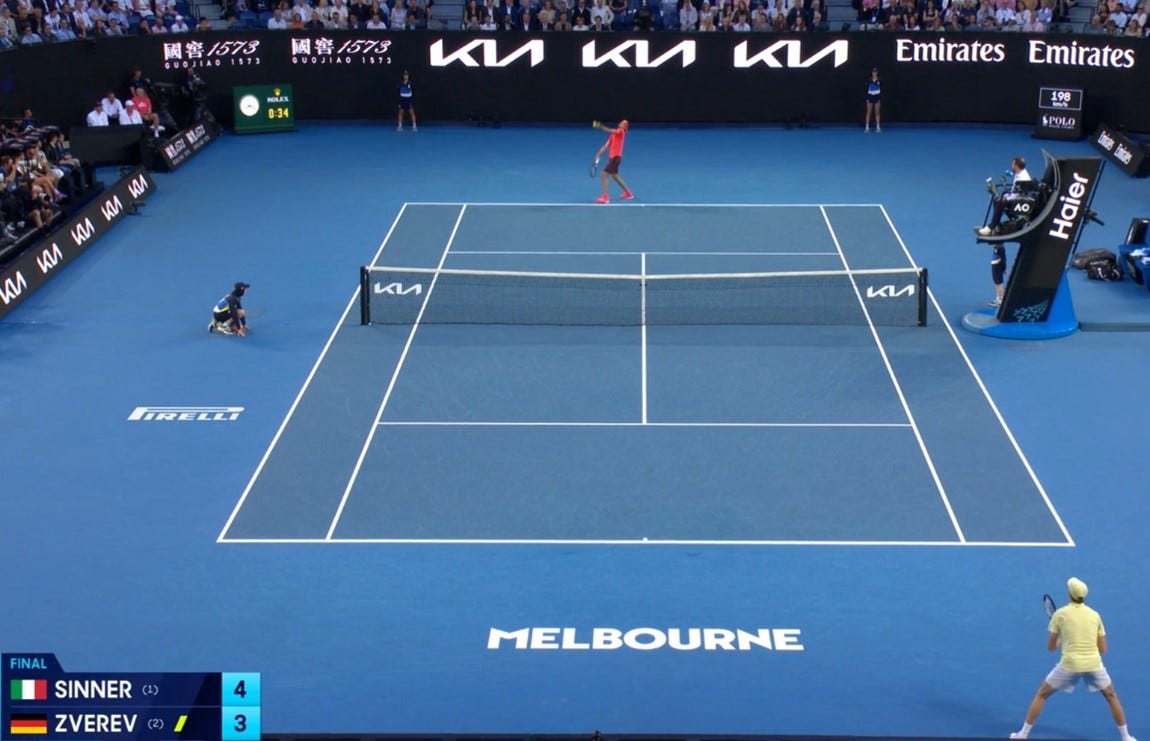
Great analysis Austen, you really nailed every main area that constituted Sinner’s margin in that final.
As an avid reader of Hugh Clarke’s work, I think the passivity is and always has been a consequence / byproduct of his forehand’s fragility.
That 2-2 40-40 point in the first set that you used as an example. I firmly believe that if you give Zverev the symmetrical situation, so him being pushed wide on his BH from a short angle, with Sinner still camping near the AD-side, he does not hesitate going down the line, and probably doesn’t miss it.